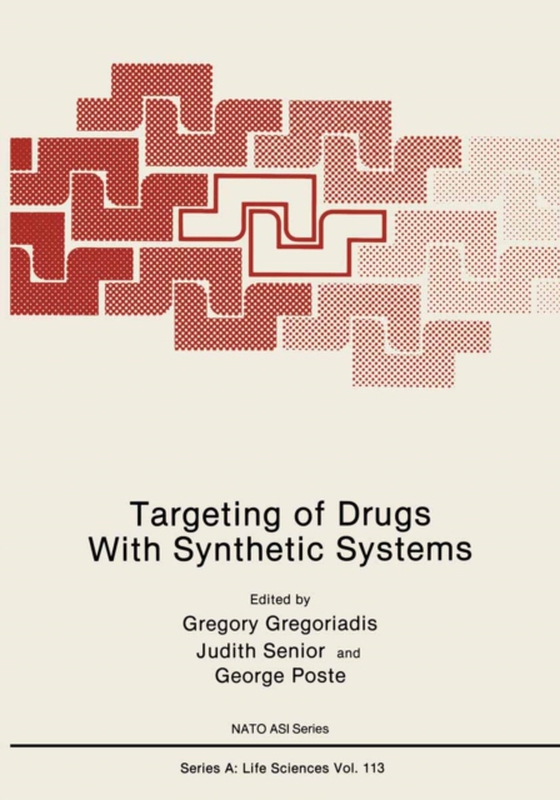
Targeting of Drugs With Synthetic Systems e-bog
436,85 DKK
(inkl. moms 546,06 DKK)
Targeting of drugs via carrier systems to sites in the body in need of pharmacologic intervention is a rapidly growing area of research in the treatment or prevention of disease. It has evolved from the need to preferentially deliver drugs, enzymes, vitamins, hormones, antigens, etc. to target cells and organs so as to avoid toxicity, waste of drugs through premature secretion or inactivation a...
E-bog
436,85 DKK
Forlag
Springer
Udgivet
9 marts 2013
Genrer
TGMP
Sprog
English
Format
pdf
Beskyttelse
LCP
ISBN
9781468451856
Targeting of drugs via carrier systems to sites in the body in need of pharmacologic intervention is a rapidly growing area of research in the treatment or prevention of disease. It has evolved from the need to preferentially deliver drugs, enzymes, vitamins, hormones, antigens, etc. to target cells and organs so as to avoid toxicity, waste of drugs through premature secretion or inactivation and at the same time render treatment more convenient and cost-effective. A wide assortment of naturally occ- urring or semi-synthetic drug carriers (e. g. antibodies, glycoproteins, lectins, peptide hormones, cells and liposomes), their inter action with relevant receptors and mediation of optimal pharmacological action were discussed in the two previous NATO Advanced Studies Institutes (ASI) of this series, "e;Targeting of Drugs"e; and "e;Receptor-Mediated Targeting of Drugs"e;, the proceedings of wh ich were published by Plenum in 1982 and 1984 respectively. This book contains the proceedings of the 3rd NATO ASI "e;Targeting of Drugs with Synthetic Systems"e; held as be fore at Cape Sounion, Greece during 24 June-5 July 1985. It deals mostly with man-made carriers such as a variety of polymers, matrices, liposomes and other colloidal micro- particles. The twenty chapters discuss the interaction of such carriers with the biological milieu, approaches to bypass the reticuloendothelial system (or, when needed, take advantage of its interception of carriers to optimally deliver drugs to phagocytes) and ways to improve delivery to specific cells, often with the help of carrier-linked ligands.
 Dansk
Dansk

